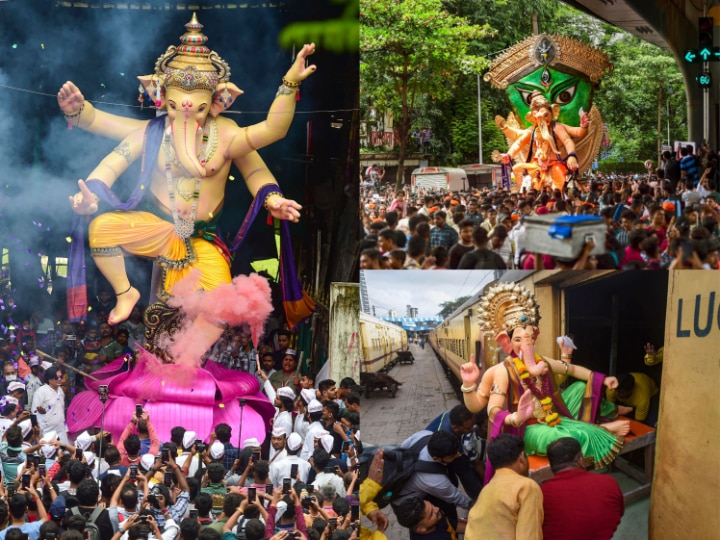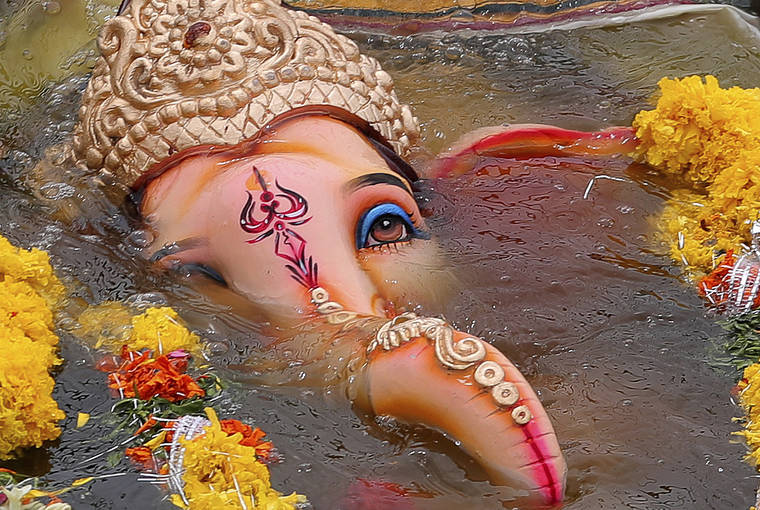Introduction
While the life around me is breathing the festivities of Vinayak Chaturthi, a range of emotions align together like a rainbow that beautifully sets the backdrop of a stage for welcoming Lord Shri Ganesha! The colours in celebrations and festivities are thus set by the tone of emotions or Rasas – named ‘Navrasas’. These nine emotions being a key aspect of performing arts, are powerful ways for the artist to engage with the audiences to weave the stories they want to tell in a meaningful way. Hasya, Shringara, Raudra – nine such emotions that speak about life at large! How we emote to the variety of scenes and situations that life brings.
Abhivyakti of navarasas illuminate upon festivals too! In Hinduism most festivals are about God, his devotees and grand festivities aptly portraying how life itself is a celebration! During Ganesh Chaturthi, families and mainly communities cease the differences and come forward to celebrate with food, dance, music, devotion and deep joy. 10 days of Bappas time with us, devotees ensure that they spread their love and devotion and colour the world with joy. Start from installing the idol to chanting and praying, to fasting and offerings of modakas to Lord; the festivities evoke emotion of deep joy (Hasya)

Shringara (Beauty)that evokes crown emotion of love, the artful hands of Sculptors carve life size idols of Lord Shri Ganesha. Devotees bring the idols and perform Shringara with ornaments, silk clothing, mukoot, flowers and fragrances of dhoopa and deepa. With the deep sense of devotion in hearts, devotees perform Shringara, decorate and adorn pandals, invoking feelings of love towards their favorite Lord Gajanana.

Dear lord with the adjectives like Ekdanata (one tusk), Ekakshara (prayed just by chanting single syllable) the celebrations of Chaturthi immerses me (the observer) and the devotees with the Adbhuta (Wonder) rasa! It is to the wonders that how millions of us are coloured with the devotion for these 10 days and are able to take this time out for the morning and evening prayers, arti, offerings, music and dances. Aren’t these the true elements of life? Synchronisation of drum beats, with bells and dancing steps in the grand procession of the Dancing Lord is magically wondrous.

The strict and disciplined schedule of festivities of Ganesh Chaturthi and immersing into festivities amid the mundane of the life denotes Veera (Velour) and commitment among devotees. Devotees follow the prayers and rituals with fasting, kirtan, prashad preparations and other personal determination during the festival. In Jainism, around the same time of Ganesh Chaturthi celebrations, parva of Paryushan is celebrated. Sadhakas (devotees) perform very strict fasting for minimum of 8 days to maximum of 30 days. Such a tapa (penance) depicts true velour.

Karuna rasa (Compassion), God is ever so merciful! Upon realisation of mistakes, we open our hearts to the merciful God and he being a ‘Karunapati’ accepts our mistakes, offering us a chance. Lord Ganesha also marks new beginnings, considered auspicious and remover of all obstacles. That way, devotee’s realization of his/her mistake marks a new beginning for him/her! Through penance, fasting and deep devotion – a true devotee dilutes his egos and submit to the Lord. Thus, thinking about Karuna rasa denotes a spiritual journey of the devotee and devotee’s lasting bond with the God.

As a child how would you feel getting lost and separated from your parents? The idea itself is fearful! Bhayanak (Fear) rasa denotes a very crowded temple or an overcrowded procession. As a child feels nervous seeing such a scene before entering the temple or joining into a large procession. Something that we may learn is to exercise patience and empathy while entering the overcrowded place and ensure that children feel safe and enjoy the festivities without a feeling of fear.

Raudra rasa (anger) is a form that is beautifully depicted by the artists of different genre! It is such a treat to see a dancer depicting Raudra form of Lord Shiva – the father of Lord Ganesha and father of us all! Per a very famous story, when Shiva meets his son for the first time, he cuts his son’s head in anger, unknowingly that he did that to his own child. The ever so peaceful Lord Shiva, suddenly takes up Raudra swaroop and behead his son and upon devi Parvati’s request he fixes elephant head over the bust of child Ganesha. The famous story symbolises that how God cuts ego centric mind to offer his child with a broader and more accepting intellect.
Upon the conclusion of the grand festival, idols of Lord Ganesha are brought to immerse in water to denote his journey back to his heavenly home from the earth. A lot of the times, idols are made from materials which do not easily dissolve in the water, polluting the water and the surrounding ecosystem. For many days the idols float over water surface. Such scenes to the eyes of a beholder bring the feeling of Bibhatsa (disgust) a grand festival, concluding in this manner??!! Fortunately now, more and more devotees prefer idols made out of purely organic materials, easily dissolving in water without causing any harm to water or polluting the nature around.

As devotees bid farewell to Lord Ganesha after ten days of joyous celebration, a profound sense of emotion envelops them. Tears are shed, and a deep longing for their beloved ‘Deva’ is felt. However, as the festivities conclude, a sense of tranquility gradually descends. This marks the beginning of a new phase, where devotion transitions into the serene realm of Shanta Rasa, represented by the color white.
Just as the colours of a rainbow blend together to form white light, the amalgamation of the eight preceding emotions culminates in the experience of Shanta Rasa (peace). This ninth and final emotion, the essence of spiritual journeys, is the embodiment of profound inner serenity and contentment.
Ganesha’s Iconography: A Multifaceted Journey from Mythology to Modernity (Part 1)
Contributor




